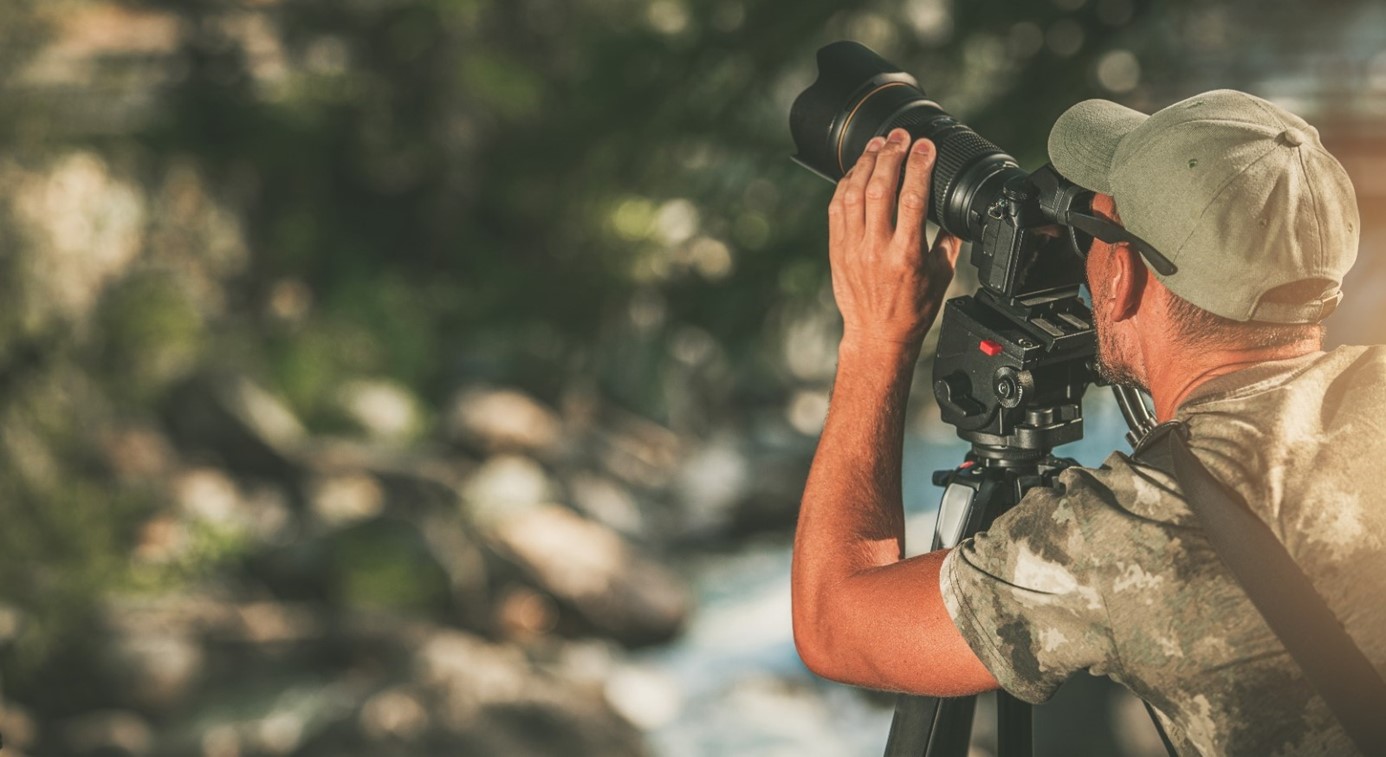Table of Contents
- 1. Know Your Subject & Study Behavior
- 2. Choose the Right Gear and Use It Well
- 3. Be Intentional with Light & Angle
- 4. Frame with Context — Don’t Always Zoom Tight
- 5. Slow Down, Be Patient, Observe
- 6. Use Fast Shutter Speeds & Burst Shooting
- 7. Select Effective Focus Modes & Tracking Settings
- 8. Manage Exposure & Dynamic Range
- 9. Prioritize Ethical & Safe Practice
- Bonus Tip: Start Small, Practice Macro & Insects
- FAQ — Quick Answers
- Final Thoughts
This blog post may contain affiliate links. As an Amazon Associate I earn from qualifying purchases.
9 Tips for Improving Your Wildlife Photography
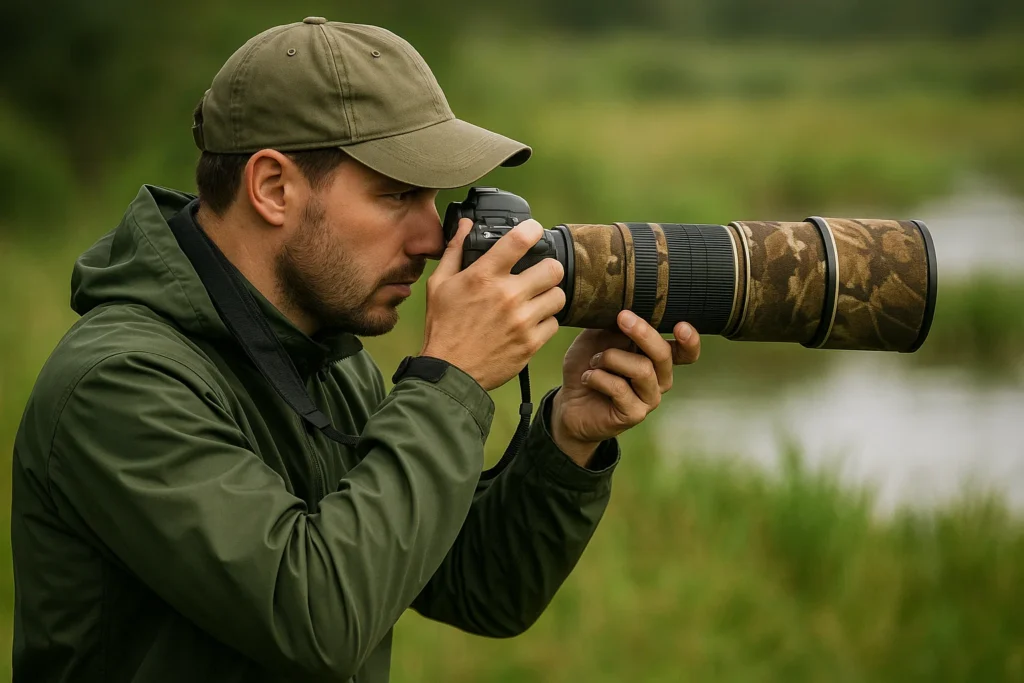
Whether you’re chasing elusive birds at dawn or stalking foxes in the twilight, wildlife photography pushes your skills, patience, and gear to the limit. But with the right techniques, you can dramatically raise your hit rate and capture images that tell stories. Below are nine tried-and-true tips — backed by research, field practice, and expert insight — that will help you take your wildlife photography to the next level.
1. Know Your Subject & Study Behavior
Understanding how your animal behaves is as important as knowing your gear. According to the U.S. Forest Service, wildlife photographers should “know their subject” — when it’s most active, its habitat preferences, and behavioral triggers like feeding or mating. US Forest Service
- Research species bio: feeding times, territory, alerts
- Scout locations ahead of time
- Watch for signs (tracks, droppings, nests)
- Aim to anticipate actions (flight, hunting, grooming)
With experience, you’ll begin to predict where and when interesting behavior will occur — and that gives you the edge.
2. Choose the Right Gear and Use It Well
Gear alone doesn’t make a great photo, but the right gear used well makes a difference. As many wildlife photographers note, you don’t need the most expensive camera — but you do need one fit for the task. mc2photography.com
- A telephoto or super-tele lens (e.g. 200–600 mm) helps isolate distant subjects
- Use a sturdy monopod or tripod to offset heavy lenses
- Fast memory cards and buffer capacity help with burst mode
- Backup batteries and lens cleaning supplies are essential
The trick is to maximize what you have and learn its limitations.
3. Be Intentional with Light & Angle
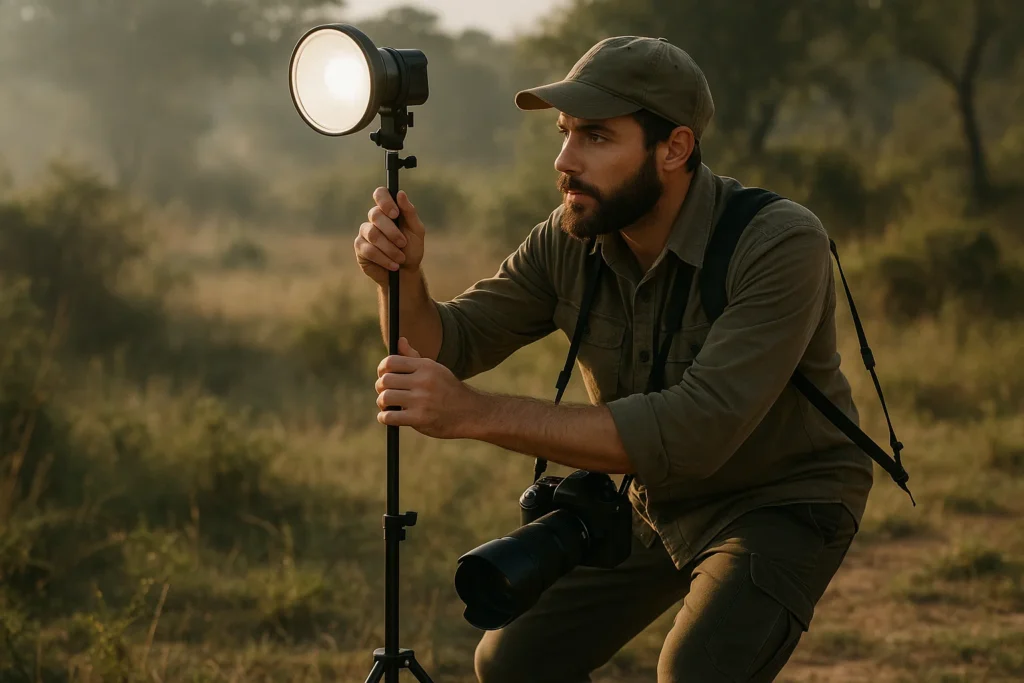
Light makes or breaks an image. Jess Findlay emphasizes how small changes in angle relative to the sun can dramatically alter catchlights, shadows, and mood. JESS FINDLAY PHOTOGRAPHY
- Shoot during golden hours (shortly after sunrise, before sunset)
- Position so your shadow points to your subject (sun behind you)
- Avoid harsh midday light which flattens contrast
- Use side or back lighting creatively for silhouettes or rim lighting
Match your lighting strategy to the mood you want to convey — drama, clarity, or silhouette.
4. Frame with Context — Don’t Always Zoom Tight
While close-ups are compelling, tightly cropping every subject loses environmental context. National Geographic encourages backing off occasionally to include habitat — this gives visual narrative and shows the animal’s world. National Geographic
- Alternate tight portraits with wider scenic shots
- Use wide-angle lenses occasionally to place animals in their setting
- Let negative space or environment help tell the story
These variations make your portfolio richer and more expressive.
5. Slow Down, Be Patient, Observe
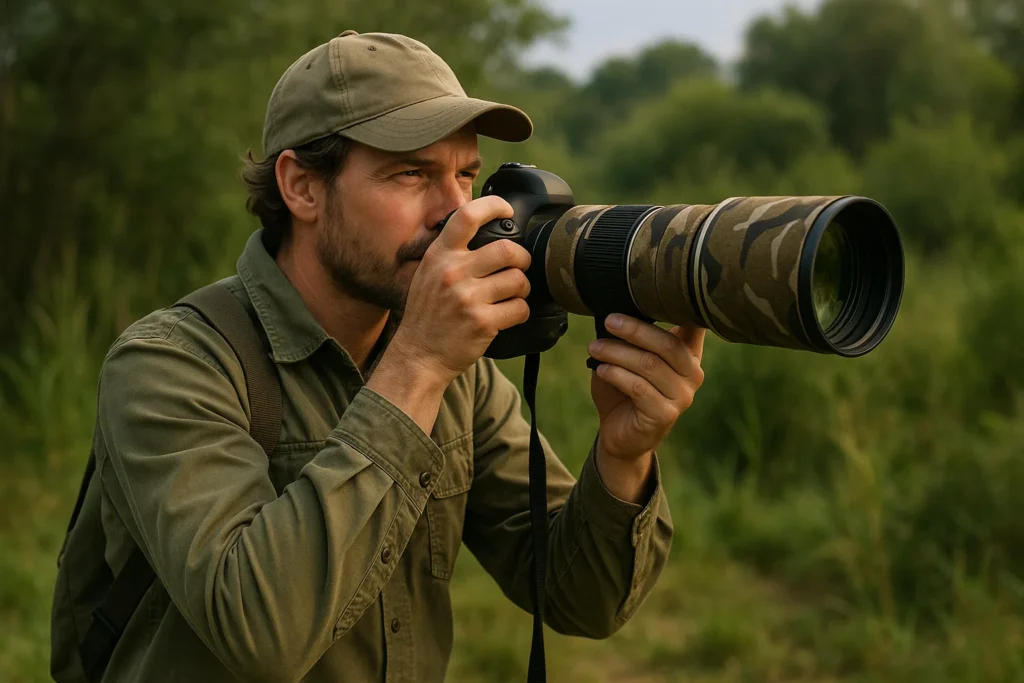
One of the most repeated pieces of advice: sit still and let the wildlife come to you. Bangor Daily News+1
- Choose a good vantage point, settle in, and wait
- Avoid sudden movements or noises
- Bring hydration, snacks, and a ground mat to stay comfortable
- Use remote triggers if you want to stay hidden
Wildlife behaves more naturally when not pressured; often, the most interesting behavior happens after a long wait.
6. Use Fast Shutter Speeds & Burst Shooting
Wildlife rarely pauses — motion is part of life. To freeze action:
- Use shutter speeds of 1/1000s or faster (especially for birds)
- Use continuous (burst) mode to maximize chances
- Combine fast shutter with high ISO if needed (while managing noise)
- Lock exposure and focus (AE/AF lock) to recompose quickly
A rapid shutter plus burst mode often captures the decisive moment your eye can’t see in real time.
7. Select Effective Focus Modes & Tracking Settings
Your autofocus setup can make or break a wildlife shoot.
- Use continuous AF (AI Servo, AF-C) for moving subjects
- Use single-point or zone AF when you want control over where your camera focuses
- For birds or erratic animals, try predictive tracking / 3D tracking if your camera supports it
- Back-button focus (if available) gives you more control by separating AF from the shutter button
Take time to test focus settings before heading out — switching modes mid-chase wastes precious seconds.
8. Manage Exposure & Dynamic Range
Wildlife scenes often include bright skies and dark shadows. Balancing exposure is key.
- Use spot or partial metering to expose for the animal rather than average scene
- Use exposure compensation to override misleading scenes
- Shoot RAW to retain more highlight and shadow recovery potential
- Check your histogram and highlights regularly
Proper exposure ensures you preserve detail where it matters — the animal’s face, eyes, or texture.
9. Prioritize Ethical & Safe Practice
True wildlife photography isn’t just about aesthetics — it’s a responsibility. The U.S. Forest Service emphasizes that no photograph is worth endangering animals, subjects, or yourself. US Forest Service
- Keep a respectful distance and don’t stress animals
- Avoid baiting, harassing, or calling animals unnaturally
- Leave no trace: take out what you bring in
- Use blinds or hides if needed
- Respect local rules, regulations, and permits
Your reputation and the welfare of wildlife depend on responsible behaviour.
Bonus Tip: Start Small, Practice Macro & Insects
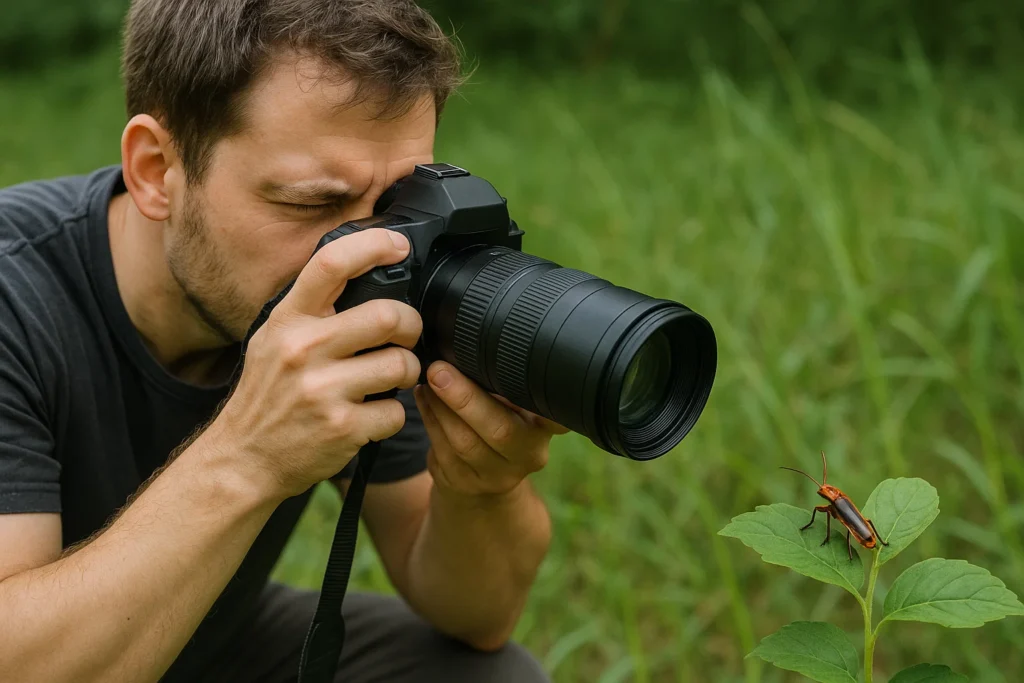
If large mammals or birds feel intimidating, begin with smaller subjects — insects, butterflies, lizards — to refine your technique. This is often highlighted in field blogs as a way to build skill and patience. Bangor Daily News
These subjects teach you about focus, depth of field, lighting, and composition in a more forgiving environment.
FAQ — Quick Answers
Q: Do I need an expensive lens to get good wildlife shots?
A: Not always. With strong technique, even moderate lenses (200–300 mm) can yield good results, especially for birds or smaller animals. mc2photography.com
Q: What ISO should I use?
A: Use the lowest ISO possible for your light conditions and your camera’s acceptable noise threshold. For many cameras, 800–3200 is viable in early morning.
Q: How do I avoid scaring wildlife away?
A: Move slowly, stay low, use blinds, and avoid sudden noises or glare.
Q: What shutter speed for birds in flight?
A: 1/2000s is a good starting point; faster if conditions allow.
Q: Can I shoot wildlife in midday sun?
A: Yes, but aim for shade, use spot metering, and avoid high contrast. Use fill flash or reflectors if needed.
Q: How do I get eye catchlights?
A: Position yourself so light hits the subject’s eyes (your shadow toward them), or wait for slightly softer light angles.
Final Thoughts
Wildlife photography is a blend of art, patience, and preparation. These nine tips form a solid foundation — but mastery comes from time in the field, learning from misses as much as successes, and always respecting the subjects you photograph.
Brought to you by Amateur Photographer Guide — your source for practical wisdom, gear guidance, and photographic growth.

